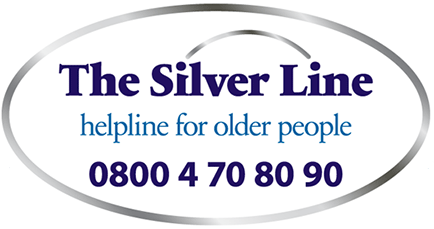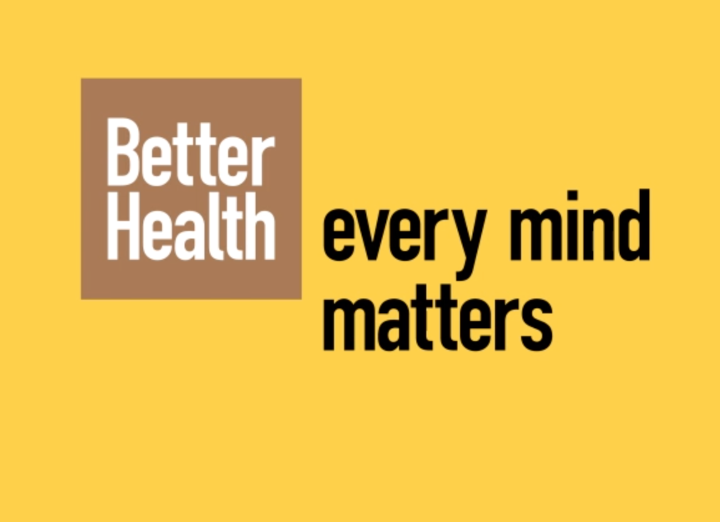Don't brush it under the carpet.

Thinking about ending your life?
We know that many older people struggle alone with their emotional wellbeing.
If you are feeling anxious, sad, lonely, helpless, depressed, or you are grieving, help is out there. The first step to feeling better is to talk to someone, it could be a loved one, a friend, a health professional or a neighbour.
People want to help.
This hub is designed both for adults who need support, and for family, loved ones and professionals in contact with at-risk older people.
You are not alone if you are struggling.
Helplines, resources and contacts
Below you will find a variety of resources and ideas including phone helplines, text services, websites, apps and more. Please make a note of anything that could be useful to you, or share the information with somebody else.
Some resources are focused on Sussex and the South East, but they will all direct you to other services if you are outside this area.
Talk to someone
Tell a friend, family member, neighbour, health professional or someone you trust how you are feeling.
We know it is difficult to talk about emotions and feelings, but there are lots of people who are ready to listen.
Contact your GP practice
They will help you get support from the right services and will sometimes take appointments over the phone.
- If your GP practice is closed or unavailable, call NHS 111
- Visit the website
The Stay Alive app
This app from Grassroots Suicide Prevention can be downloaded onto your mobile, or you can use the desktop version. It is confidential and you can use it at any time of day or night.
Age UK provide a wide range of services for older people including telephone friendship and a befriending service.

The Samaritans are a 24 hour confidential, listening service providing emotional support for anyone in crisis.

The Silver Line is the only free confidential helpline providing information, friendship and advice to older people, open 24 hours a day, every day of the year.

Mind offer lots of resources and information on mental health and looking after yourself.
- Visit the website
- Mind’s online community Side by Side is an online space where you can listen, share and be heard

The NHS have many resources available, including free and confidential therapy services.
- Talking Therapies Service for 1:1 support, self-referral and quick access
- Advice if you are struggling with feeling lonely
- 5 Steps for Mental Wellbeing

If you prefer to talk to someone over text message, Shout offer confidential support 24/7.
- Text the word SUSSEX to 85258
- Visit the website

Battle Scars help those who struggle with self-harm by running easy-to-access peer support groups, with a similar group for their families. Their worldwide, all-ages Facebook group offers around-the-clock peer support for anybody needing help.

Expert advice and practical tips to help improve your mental health and wellbeing.

A Sussex-based service for mental health support.

Offer a range of self-harm and mental health focused activities
A place to meet like-minded people and someone to share your worries with. Aims to reduce isolation and help men deal with mental health challenges.

Qwell offers free, safe and anonymous mental wellbeing support for adults across the UK. They offer online messaging support, peer to peer forums and a range of tools and content.
Recognising and talking about suicide with older adults
Risk factors
Many of us – one in five – suffer from suicidal thoughts. Research shows that these thoughts can be interrupted and suicide can be prevented.
Some older people experience interrelated risk factors such as loneliness, being homebound and isolated. Coupled with difficult experiences or changes in physical health, cognitive abilities or independence, it can seem that death is preferable to the pain and difficulty of continuing to live. Behind every death lies a tragic and unique story of insurmountable pain.
It is important to not over-simplify what could have driven someone to take their life. We should not speculate about their emotional state, and we should not try to look for what went wrong or who is to blame.
Suicide does not only impact people with mental health issues. Many deaths occur among older people who are free from anxiety or depression. Suicide is always unique and complex.
It is most likely a combination of individual, relationship, community and societal risk factors that can increase the possibility that an older adult will attempt suicide. You can find some examples below.
- Hopelessness – struggling with their own mortality and experiencing anxiety about dying
- Loss of identity – previously independent seniors may find themselves struggling to dress themselves, read or lead an active life
- Loss of purpose – retirement can be really hard for people who may stop feeling needed
- Chronic illness and pain – older people may be suffering with disease such as arthritis, heart problems, high blood pressure, and diabetes, which can bring on pain and mobility issues that compromise quality of life
- Seniors may also experience loss of vision and other senses, such as hearing, making it harder to do the things they love
- Financial troubles – older people living on a fixed income may struggle to pay their bills or keep food on the table
- Stigma associated with help-seeking and mental illness, especially with older generations, and they may not want to connect the word ‘suicide’ with their feelings of not wanting to go on
- Suicide death rates of older people are particularly liable to be underestimated and it can be challenging to determine whether an attempt was a deliberate act or just overdosing on drugs or an accident or a voluntary fall
- Unsafe media reporting of suicide
- Grief – an older adult will have faced loss multiple times, possibly including a spouse of many decades
- Isolation – some older people may be housebound, living alone and have few social interactions
- Loneliness – many may feel more isolated and lonelier by not being able to connect with their communities, through physical ailments, such as loss of mobility or hearing
- History of suicide in the family
- Lack of access to healthcare
- Ageist attitudes that associate old age with physical and cognitive decline (considering older people to be frail and helpless individuals) inevitably influence the level of care or concern they may receive
- Suicide cluster in the local community
- Stress of acculturation
- Community violence
- Historical trauma
Warning signs in older people
Older people who are thinking about suicide may show one or more warning signs, through what they say or what they do. They may be very subtle and easy to miss.
You may see a change in behaviour or the presence of entirely new behaviours. This is of particular concern if the new or changed behaviour is related to a painful event, loss, or change.
Older people are less likely to use words like ‘depression’ or ‘suicide’ or even ‘mental health’ because of associated stigma. Keep an eye out for euphemistic language like ‘not wanting to be here’ or being a ‘burden’.
Here are some potential warning signs that an older person may be considering suicide:
Mood
- Depression
- Anxiety or fear
- Loss of interest in people or activities
- Frequent irritability
- Feelings of humiliation and/or shame
- Outbursts of agitation and/or anger
- Unexplained crying
- Self-loathing or self-hatred
- Relief or sudden elation, extreme happiness
Talk
- Being a burden or bothering others
- There is no point in something
- The world is better off without them
- Saying they won’t be around for future events (like Christmas)
- Feeling hopeless
- No one cares
- Having nobody or nothing to love, being ‘forgotten’
- Having no reason to live
- Feeling trapped
- Hating their life
- Feeling a failure
- Unbearable pain
- Wanting the pain or exhaustion to end
- Things would be better when they are gone/dead
- Problems will be over soon
- Lack of interest in the future
Behaviour
- Changing their will or making final arrangements
- Giving away prized possessions
- Previous suicide attempts such as “accidental” over-doses
- Neglecting self-care, medical regimens, and grooming.
- Lack of concern for personal safety
- Visiting or calling people to say goodbye
- Saying good-bye to family and friends
- Reluctance to participate in usual events
- Preoccupation with death in art, poetry, social media, TV, etc.
- Self-destructive behaviour
- Concern from community leaders or healthcare professionals (e.g. church leaders, nurses)
- Impulsive, reckless behaviour
- Apathy about appearance or health
- Increased or intense use of alcohol or drugs, or starting to use them recklessly
- Looking for a way to end their lives, such as suspicious questioning about strong medications
- Isolating from family and friends
- Sleeping too much or too little
- Writing letters and asking them not to be opened
- Aggression and/or rage
- Extreme fatigue
Older adult suicide myths
Some phrases and assumptions around suicide add social stigma and shame. This stigma can be even more damaging to people who may be going through difficult times with personal, emotional and social development.
When a person at risk hears stereotypes, they can see it as confirmation that they are misunderstood, inadequate, alone or worthless. This makes them more likely to struggle in silence and can increase the chance that they will act on their suicidal thoughts.
Here are some of the most harmful suicide myths debunked. Click each myth to see the real facts and explanations.
Fact: Suicidal thoughts and behaviour in care homes is often unrecognised and referred to as ‘giving up’.
An older person may tend to neglect eating or drinking and be unwilling to get out of bed or participate in day-to-day activities. It is a mistake to assume that this is a normal life stage; in fact, it’s likely that the person has become depressed as a result of life changes and losses. Talking with them about their feelings and worries and being helped to access treatment and support can both be very helpful.
Fact: Asking a person about suicide can protect them.
Asking about suicide can seem daunting, especially with young people, but it is always safer to ask and give them the opportunity to get help and talk about their feelings.
A suicidal person will already have heard of, thought about and possibly researched suicide. You will not be ‘planting’ an idea.
Conversations and language around suicide need to be carefully managed. Asking an older person if they’re having suicidal thoughts gives them permission to tell you how they feel and let them know they are not a burden.
Our older adult-specific resource below has a comprehensive plan for a conversation about suicide.
Fact: Many suicidal crises can be relatively short-lived.
Most people who feel suicidal do not want to end their lives, they just want the situation, pain or feelings to end.
The distinction may seem small, but it is very important. It’s why talking to older people people about staying safe for now and finding the right help is so vital. Anyone can learn how to safely intervene until a person can be connected with further support.
The feelings and experiences that cause suicidal thoughts can be particularly heightened for older people. It can help to remind them that intense feelings can and will pass, and they will not feel this way forever.
Fact: Anyone talking about suicide needs serious attention.
Threatening suicide is a serious sign that an older person needs help. It can be useful to reframe this – instead of thinking that ‘attention-seeking’ is negative, think practically. Of course this person is seeking attention, they are struggling with pain that they cannot manage. The attention they need may well save their lives.
Most people who die by suicide have talked about it first. Do not dismiss any mention of suicide as ‘dramatic’ or ‘attention-seeking’. We should always take any mention of suicide seriously.
Fact: Warning signs, verbally or behaviourally, precede most suicides.
Most people struggling with thoughts of suicide try to communicate that they need help. This could even be on an unconscious level.
People who are suicidal may only show warning signs to those closest to them. If those people don’t know what to look for or don’t recognise what’s going on, suicide can seem sudden or without warning.
It is so important to be alert to any changes in an older person’s behaviours, particularly if those changes are for the worse. A life event, death, divorce, loss of mobility, medical diagnosis or losing contact with friends can be huge events in a person’s life.
These subtle warning behaviours and comments can easily be missed, especially if different poeple notice different things.
Fact: One in five people will think about suicide at some points in their life.
While mental health issues are widespread, it is important to remember that not everyone who dies by suicide has a mental health problem.
Suicide is complex and most likely a combination of individual, societal, relationship and community factors and should never be attributed to one thing exclusively.
Older people can have a lot to deal with at home, internally and externally. Struggling to navigate their feelings does not make them mentally ill, and it is not a sign of ‘insanity’ to consider taking your life.
Fact: People who attempt suicide are suffering with deep and overwhelming feelings that could make them feel worthless, helpless or in despair.
They often feel they are a burden to others. They may believe that suicide is the only way out to end their intense suffering and pain.
Suicidal feelings can be heightened and made more intense in older people as they experience extreme changes to a long-established way of living such as mobility, medical, social and mental changes.
Reaching the point of considering suicide is never ‘easy’ and to suggest a suicidal person is being selfish may reinforce their negative thoughts and low self-worth.
Fact: Active suicidal ideation is often short-term and situation-specific.
Suicide is often an attempt to end painful emotions and thoughts. Once these thoughts dissipate, or a situation changes, so will the suicidal ideation.
Research shows that the most intense periods of feeling suicidal will change after around 24 hours and suicidal thoughts can be interrupted with timely intervention.
Older people may continue to have thoughts of suicide even after the worst periods have passed. This does not make them a constant danger to themselves, in fact, many people with suicidal thoughts live long and fulfilling lives.
The most important thing is to communicate effectively and safely with an at-risk person, so that they know who to talk to and where to go when they start having these thoughts.
Training courses
There are a range of training courses that you may find helpful to give you the skills and confidence to have a life-saving conversation.
Developing the skills and confidence to talk about suicide openly and comfortably, using safe, respectful language.
Introductory: 1.5 hours
Full course: half day
Identifying someone at risk and intervening to help create a safety plan from a first aid perspective.
Introductory: half day
Full course: one day
Developing the skills and confidence to talk about suicide openly and comfortably, using safe, respectful language.
Introductory: half day
Full course: two day
How to talk to an older person about suicide
You might also want to download the Talking Toolkit, developed by the NHS Sussex Partnership.
- Timing
- Location
- Start the conversation
- Ask about suicide
Timing is key. This is an important conversation and needs to be treated with respect.
You might want to start the conversation when they are down or upset, but this may be the time when people are most likely to close down. Instead, ask when they’re having a good day and probably feeling more talkative.
Do remember that the older person’s internal monologue might be telling them that they’re not good enough, don’t deserve help, or are a failure. Allow them to direct the conversation – don’t ambush them or make them feel targeted.
Talking in a place where someone feels rushed may be uncomfortable and affect what they say. Try these locations.
1. At home or in a quiet and private place
It’s easier to talk to an older person when they are comfortable and not worried about showing emotions.
Take your time. Avoid trying to talk during a family mealtime, or late in the day when they are tired. Instead find a time when it’s just the two of you and you can talk as long as you need without having to rush off.
2. While doing something you enjoy together
Many people find it easier to talk while doing an activity.
Older people may feel less under pressure if they don’t have to maintain eye contact. It can also be helpful to focus on an activity as this gives you both space to pause, reflect and gather thoughts without awkward silences. Remember to choose an activity that they will find enjoyable and free of motor, mobility or vision restrictions as this could become frustrating.
3. On a walk or in a quiet place
You could suggest going for a walk in a quiet or familiar place.
Some older people might not feel safe at home, but they may also feel anxiety in more public spaces. Nature can often help people to feel more relaxed, but it is important to check first.
It’s important to show that you are genuinely concerned about an older person’s experience.
Remember the four C’s and appear calm, confident, consistent and compassionate however you feel inside.
Talking to someone about how they are can be worrying, especially if you’re concerned that they’re having a hard time. You might not know what to say, or feel worried about how an older person will react.
Here are some suggestions on how to start the conversation:
How are you feeling?
What was the best and worst part of your day?
It seems like you’ve been struggling lately. Are you comfortable talking with me about what’s going on?
I’ve noticed you’ve had a couple of down days lately, can you let me know how you’re feeling or what you’re thinking about?
- If you are having feelings that are hard deal to with or scared of, you can always talk to me, it would not upset me. I just want to listen.
It is important to be direct, clear and avoid euphemism. This might be difficult, so remember that it is important to know the answer.
Have you been thinking about suicide?
Do you feel like you don’t want to be in this world anymore?
Do you want to close your eyes and never wake up?
Do you have any plans on hurting or killing yourself?
When they answer, listen with empathy and without judgement. Be careful not to look shocked or upset as they may then be less open in what they say. Be prepared to listen, even if it’s hard to hear, and try to stay calm.
What to say
Below are some ways to keep the conversation going and opportunities to offer hope, support and empathy. It can be hard to ask some of these questions, so remember it is always better to know the answer.
“Just take your time, there’s no rush.”
“I know talking about this can be difficult. I’m here to listen.”
“You can tell me anything.”
“I want to listen and understand.”
Reassure them that they matter to you and that you’re here to listen and support them and that you don’t need to rush off.
Many people who feel suicidal will feel worthless and you patiently prioritising the conversation will mean a lot.
“How long have you been feeling this way? ”
“Have you felt this way before?
If so, ask how their feelings changed last time. Reassure them that they won’t feel this way forever, and that intensity of feelings can reduce in time.
Encourage them to focus on getting through the present rather than focussing on the future.
“Have you got a plan? What is it?”
“Have you thought about how you would kill yourself?”
“Have you thought about when you would kill yourself?”
“Have you taken any steps to get the things you would need to carry out your plan?”
“Have you thought about how you might do this?”
This is important.
People who have made a plan are at more risk. Let them know that you care about them and that they aren’t alone.
“I can’t imagine how painful this is for you, but I would like to try to understand.”
“I’m here, we can find a way to get through this.”
Empathise with them. Be aware you don’t know exactly how they feel and that you have the time to listen.
“You’re not alone, lots of people feel like this.”
“I’m glad you’re telling me how you feel.”
“One in five people have thoughts like yours and recover from them, it is okay to feel like this.”
Try to offer hope and suggest that people can find ways to get through tough times and that you will help them.
“What reasons do you have for staying alive?”
Ask about their reasons for living and dying and listen to their answers. Focus on people they care about, and who care about them.
Keep asking open-ended questions – this means there isn’t a yes or no answer, but an opportunity for them to speak more, encouraging the conversation.
“Thank you for telling me.”
Encourage them to seek help that they are comfortable with. This could be a doctor, therapist, counsellor or one of the many resources listed for older people here.
What not to say
Click each phrase for more information, ideas and clarifications.
© 2024 Grassroots Suicide Prevention, registered charity number 1149873 and a company limited by guarantee 5687263

